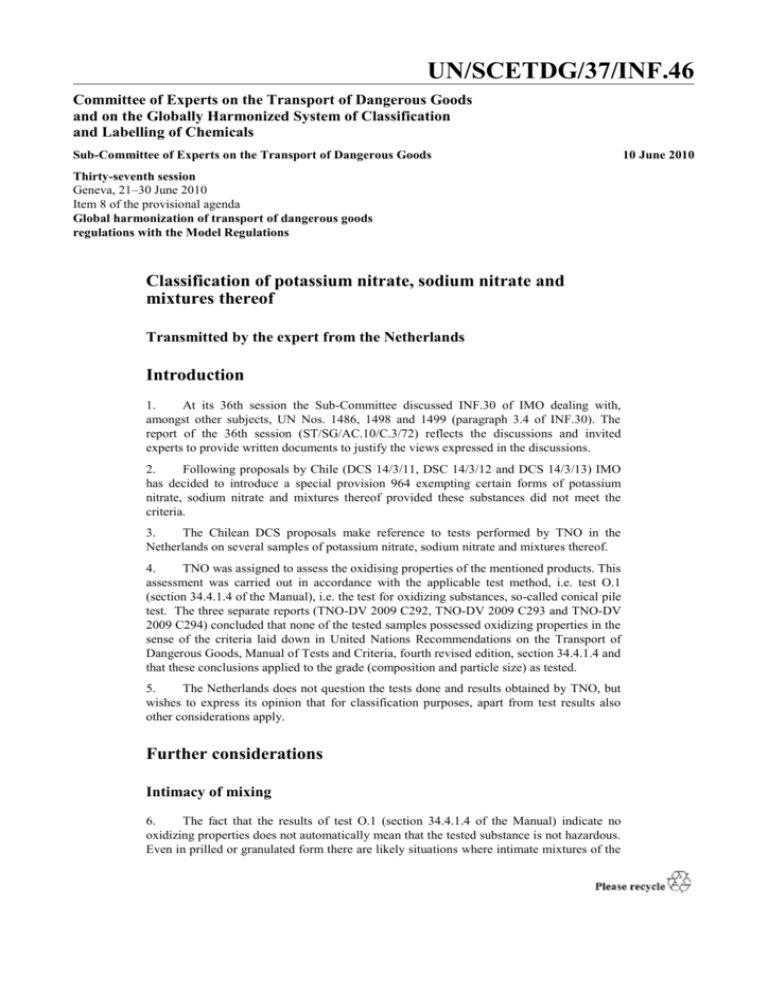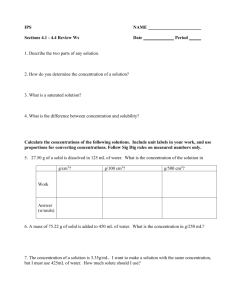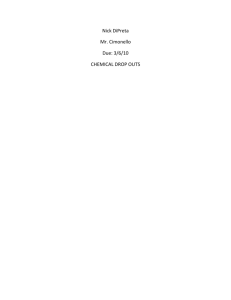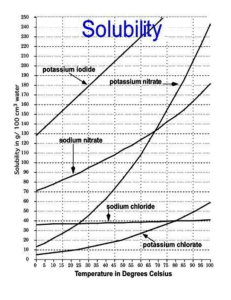UN/SCETDG/37/INF
advertisement

UN/SCETDG/37/INF.46 Committee of Experts on the Transport of Dangerous Goods and on the Globally Harmonized System of Classification and Labelling of Chemicals Sub-Committee of Experts on the Transport of Dangerous Goods Thirty-seventh session Geneva, 21–30 June 2010 Item 8 of the provisional agenda Global harmonization of transport of dangerous goods regulations with the Model Regulations Classification of potassium nitrate, sodium nitrate and mixtures thereof Transmitted by the expert from the Netherlands Introduction 1. At its 36th session the Sub-Committee discussed INF.30 of IMO dealing with, amongst other subjects, UN Nos. 1486, 1498 and 1499 (paragraph 3.4 of INF.30). The report of the 36th session (ST/SG/AC.10/C.3/72) reflects the discussions and invited experts to provide written documents to justify the views expressed in the discussions. 2. Following proposals by Chile (DCS 14/3/11, DSC 14/3/12 and DCS 14/3/13) IMO has decided to introduce a special provision 964 exempting certain forms of potassium nitrate, sodium nitrate and mixtures thereof provided these substances did not meet the criteria. 3. The Chilean DCS proposals make reference to tests performed by TNO in the Netherlands on several samples of potassium nitrate, sodium nitrate and mixtures thereof. 4. TNO was assigned to assess the oxidising properties of the mentioned products. This assessment was carried out in accordance with the applicable test method, i.e. test O.1 (section 34.4.1.4 of the Manual), i.e. the test for oxidizing substances, so-called conical pile test. The three separate reports (TNO-DV 2009 C292, TNO-DV 2009 C293 and TNO-DV 2009 C294) concluded that none of the tested samples possessed oxidizing properties in the sense of the criteria laid down in United Nations Recommendations on the Transport of Dangerous Goods, Manual of Tests and Criteria, fourth revised edition, section 34.4.1.4 and that these conclusions applied to the grade (composition and particle size) as tested. 5. The Netherlands does not question the tests done and results obtained by TNO, but wishes to express its opinion that for classification purposes, apart from test results also other considerations apply. Further considerations Intimacy of mixing 6. The fact that the results of test O.1 (section 34.4.1.4 of the Manual) indicate no oxidizing properties does not automatically mean that the tested substance is not hazardous. Even in prilled or granulated form there are likely situations where intimate mixtures of the 10 June 2010 UN/SCETDG/37/INF.46 tested substance with fuels can occur. For instance when accidentally liquid fuel is spilled over the product. This situation is not unlikely to occur in an incident during transport and storage conditions and would lead to a much more intimate mixture than is physically possible in Test O.1. 7. The fuel in Test O.1 is fibrous cellulose with a fibre length between 50 and 250 µm and a mean diameter of 25 µm. The test substances had fractions between 80.3 and 98.9% with a particle size between 0.85 and 3.4 mm. Mixing two substances with such different particle sizes leads to a lesser intimate contact compared to mixing particles of roughly the same size. 8. Above example illustrates that segregation of potassium nitrate, sodium nitrate and mixtures thereof with fuel is highly recommended, regardless of the particle size of the products. Segregation rules can not be laid upon non-regulated substances. Known experience 9. Section 2.5.2.1.1 of the Model Regulations states: “In the event of divergence between test results and known experience, judgement based on known experience shall take precedence over test results.” 10. The note under the same section states that “Where substances of this Division are listed in the Dangerous Goods List in Chapter 3.2, reclassification of those substances in accordance with the criteria shall be undertaken only when this is necessary for safety.” 11. Although the wording might not be unambiguous, it is our opinion that divergence between test results and known experience in principle should not lead to declassification of a substance that is listed in the Dangerous Goods List in Chapter 3.2. The fact that no accident has ever happened with a certain substance, does not prove that this substance is non-hazardous. 12. Potassium nitrate, sodium nitrate and mixtures thereof were introduced in the Model Regulations on the basis of experience, before the development of tests and criteria for classification of oxidizing substances. Both potassium and sodium nitrates are recognized as fire enhancing substances requiring special precautions during transport and storage. In this case, known experience prevents declassification of these substances. 13. Although the situation is not fully comparable, an analogy with ammonium nitrate can be made here. When tested in test O.1, the result is almost always that prilled ammonium nitrate does not possess oxidizing properties in the sense of the criteria given in the Manual. Other considerations prevent declassification as a non-dangerous good. 14. The same situation occurred with ammonium nitrate emulsions (ANE) before test series 8 was introduced. When tested with several test series, amongst which Test O.1, all results were negative, but the ANEs were still considered as dangerous goods. Security 15. Both potassium nitrate and sodium nitrate are considered precursors for home made explosives. Restrictions related to security can not be imposed on non-regulated substances. Proposal 16. The Netherlands proposes not to assign a special provision comparable to SP964 to UN numbers 1486, 1498 and 1499. 2






